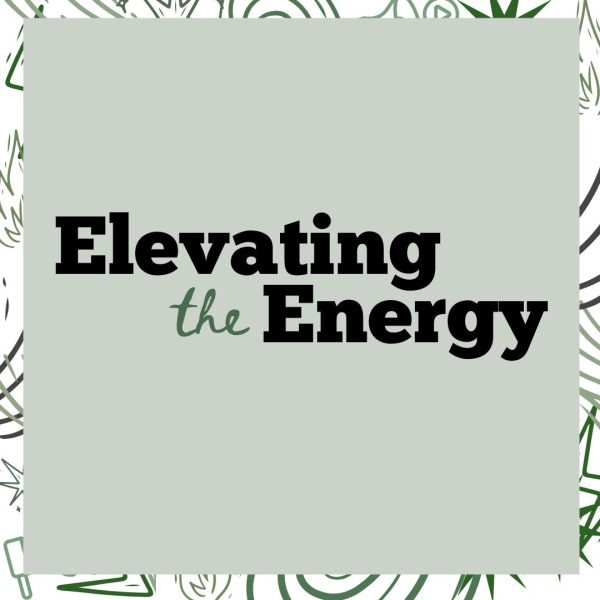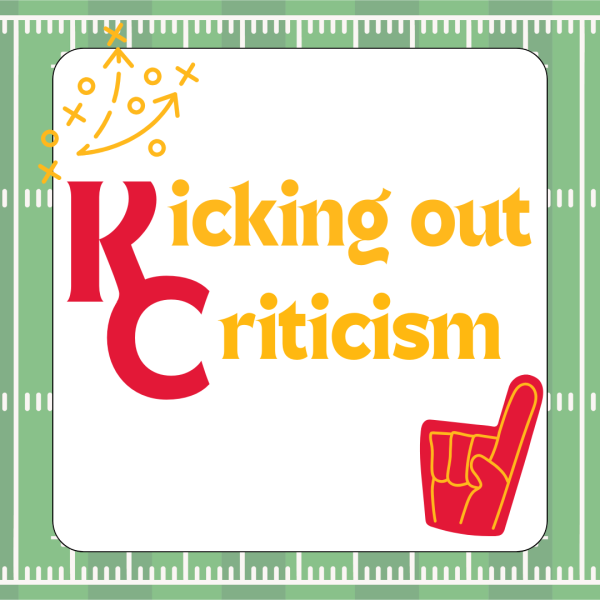Students should help with the garden and environmental club
Science teacher Deborah Sisk goes out to the composter behind the school and lifts the lid. She leans down and puts in lettuce and other leafy greens to outweigh the brown grass clipping put in yesterday. Sisk does this often to create soil to put in the flower beds she has made. Thumping the lid back down, she goes inside to get more biodegradables.
Sisk helps with the composter back by the truck dock and composts about 20 pounds of biodegradable materials per day. Sisk has cultivated raised gardening beds to raise basil in the future for Southwest’s salad bar and hopes to also raise tomatoes. She is passionate about starting up these changes, but finds it hard to do without many helpers.
“If you can just reduce your carbon footprint as best you can, that will help ensure that your quality of life will be better in the future,” Sisk said. “I don’t want people all gloom and doom, but it’s not going to go away. The line share of what gets put in landfill comes from us, but do we want to be responsible for actually being the planet’s demise? I don’t think so.”
The school is green in many ways — mainly, in the very core of its architecture. The school is LEED (Leadership in Energy and Environmental Design) certified. A LEED certification is a certification for a school that is “demonstrating to the community that a facility is built and/or operated in a way that supports the health and well-being of occupants and saves energy, resources and more,” according to the Center for Green Schools. The lights are set to self-adjust brightness and to go off automatically if no one is around, the school was built to let in a lot of natural light, the heating system is always circulating fresh air coming from inside and outside and, depending on how many people there are in a room, a CO2 panel decides how much air should be pumped in.
KAY Club waters plants teachers have brought in, and students can be seen recycling papers and plastics in the many containers stationed around our school. Even so, it’s easy to walk by a trash can and see parts of Starbucks cups that could be recycled along with paper and plastic bottles.
Southwest is a green school, but when students don’t see the results and effects of their daily actions, it can be hard for a high school student to see why throwing away one plastic Snapple bottle is a big deal in the grand scheme of things. What those students fail to see is that the accumulation of these actions and the continued lack of motivation can lead to consequences down the road.
Last year, in an effort to get students motivated to help with the composter, some students and staff gave out Starbucks and McDonalds gift cards if students provided materials like recyclables or brought biodegradables for the composter. But senior Nick Foulon said not many supported the attempt.
“It’s mostly because kids don’t have a drastic need to actually go out there and help the environment,” Foulon said. “Not every child is actually able to go out there and put away the recyclables and things like that. I think if more people got involved with that they’d see how much more important saving the environment and recycling actually is.”
Spanish teacher Carolyn Zeligman recycles almost everything — paper, cardboard, glass — and collects her shower water and uses it to water her plants. Zeligman also composts by putting all of her vegetable waste and coffee grounds into her composter, which she then uses in her garden.
“The only trash I have is [a result of having] a cat, so I have kitty litter,” Zeligman said. “And if I could find some way to recycle that I would, but I don’t think you can — it’s kind of a disgusting thought.”
One thing teachers like Sisk and Zeligman are hoping to get up and running by the time it gets warm again is a community garden, much like the ones many of us have either visited or had in elementary school, starting off with growing tomatoes and basil but progressing to flowers and more fruits and vegetables.
“They’ve already started [getting the garden ready]; they have a couple little raised beds up there by the cushion area, but we’re hoping to do one where we can put in flowers and stuff to attract butterflies, and maybe do butterfly tagging and have things that they can either use in the cafeteria and the foods classes,” Zeligman said.
Another thing teachers are hoping students will start up again is “Adopt-a-Hallway,” which is when a group of students will take different hallways of the school and are responsible for recycling there and keeping it clean. Sisk hopes to use this angle to get many students to work together so the large job is quicker. When Sisk had a group of four or five students, it would take them until 4:30 to finish the entire school.
“Well, the first year we opened, I had some pretty interested students [help out with things like gardening and recycling],” Sisk said. “And since that time, I’ve not had anybody. I know it’s grunt work -— I do it, it’s grunt work. So that’s when we started adopting hallways. The building itself is huge to do the whole thing, and the custodians do not have the time to separate everything out, so that’s why we have separate containers. But if we all just chip away at it [recycling recyclables], little by little, I think that it’s better to do something than nothing at all. And that’s kind of my mantra.”
As a whole, the school does a good job of being green, but if even a small percentage of students take charge and solidify the addition of the Environmental Club that has been trying to make itself known or decide to help in the garden that will be opening up soon, students can make the school a more beautiful and environmentally conscious place to be in. If a person is only helping with the community garden or the Environmental Club for the community service hours, working with the school in a place where the school can have fresh grown fruits and attract butterflies would be a fun and helpful way to spend even an hour after school a week. Students need to actively step up and start making decisions about what kind of carbon footprint they want to leave behind and to make a difference — the school needs students willing to change.
“As we progress and we start planting trees, we start going out there and actually avidly protesting, or we start avidly helping the environment, it helps everybody as a whole,” Foulon said. “Not a lot of people seem to realize, especially around here, that the environment doesn’t just affect us, it affects everyone globally. So, whenever we make that connection, we’re going to have not only a connection here in Southwest but also a global connection around the world.”
Katie Lucas is a Libra who enjoys long walks on the beach and the occasional beautiful sunset. She is also a sophomore and first-year staffer for the Standard,...






